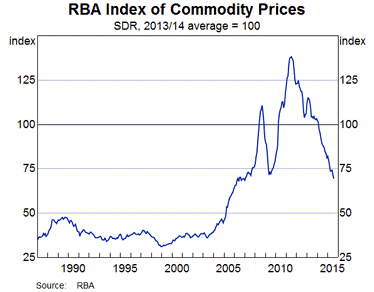Why the Chinese Slowdown Could Mean Recession for Australia
From an outsiders’ perspective, the Australian economy was somewhat of a miracle during the Global Financial Crisis (GFC). Due in part to luck and in part to good management, we did not experience anywhere near the contraction felt in the US and Europe.
All good things must come to an end, however, and so must our run of economic growth. It is inevitable that we see a slowdown at some point. And 2016 / 2017 looks like the time that we may see the recession we missed during the GFC.
Is China the Problem?
The potential for Australia to see a recession is driven by a number of factors:
- The Chinese economy has slowed dramatically, affecting prices for Australia’s main exports
- Mining companies are no longer investing large amounts of capital into the economy
- The fall in mining and resources expenditure is flowing through to a wider slowdown in the economy
- This has led to poor business and consumer confidence
Since early in 2014, we have seen prices plummet for Australia’s main export commodities (oil, iron ore, LNG, copper etc).
This chart shows the stark reality of the drop

On average, prices in USD terms have fallen more than 40% in the last two years. Under these conditions, mining companies are dramatically scaling back their activities – with direct effects on the share and housing markets and the economy in general.
Australia in Recession?
As previously mentioned, Australia dodged a bullet during the GFC. While things slowed down, we did not see anything like that which was experienced by other developed economies.
Our economy avoided recession due to a combination of factors:
- Our relatively robust banking sector
- Investment in coal, iron ore and gas pumped billions of dollars into the economy when it needed it most
- Population growth has led to consistent demand for new dwellings
The mining boom and the subsequent bust has yet to fully play out – the most immediate sign is the large falls in value of most mining companies on the stock exchange. We are also now starting to see an increase in liquidations and bankruptcies in the mining services area. This will further impact business confidence.
Property prices have been stable, but mainly due to the reduction in interest rates – this improves affordability in an otherwise overvalued asset class. While low interest rates are nice for borrowers, they are really a symptom of slow growth in the economy overall.
The recent spate of rate rises by the big four banks will also impact sentiment – effectively raising rates at a time when confidence is weak.
What to do with your portfolio
With the domestic economy slowing and vulnerable, there are things you can do to protect your portfolio. Here are some ideas:
- Defensive Stocks: Look for stocks with less leverage to the economic cycle. These are typically things like consumer staples, where demand doesn’t fluctuate much over time.
- Review your Bank Exposure: While providing good yield, bank stocks are ultimately leveraged to economic and credit growth. Future profits and share prices can be impacted by bad debts.
- Overseas Investments: While the Australian economy may be slowing, other countries are at different stages of the economic cycle. See my ‘Insights’ page for more information on the benefits of investing internationally.
- Bonds: Mainly overlooked in Australia, but an important part of a diversified portfolio. The traded bond market is around 3 times greater than the total share markets and represents an important source of income, safety and diversification. Bond rates fall somewhere between cash and equity yields (ie better than term deposits but less than dividends). Importantly, bond prices generally move in the opposite direction to share prices, giving you benefits in terms of diversification and a store of value.
If you’d like to know more about how we can help you, simply contact our office to arrange a complimentary initial consultation on 07 5494 0650.
